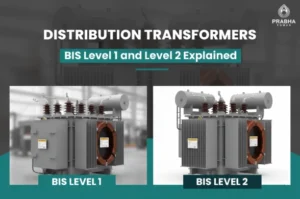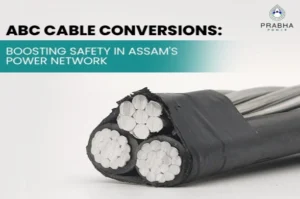
Choosing between aluminium and copper cables is a critical decision that impacts your electrical project’s safety, efficiency, and budget. Copper boasts nearly 60% higher conductivity than aluminium, making it a powerhouse for high-performance applications. Meanwhile, aluminium’s lightweight nature—almost three times lighter than copper—makes it a go-to for long-distance projects like overhead power lines.
This choice isn’t just about technical specs; it’s about aligning with your project’s unique needs. From cost to durability, each material brings distinct advantages and trade-offs to the table.
In this guide, we’ll break down the key differences, benefits, and practical applications of aluminium and copper cables to help you make an informed decision.
Understanding the Basics: Why Cable Material Matters
Cables are the lifelines of any electrical system, delivering power safely and reliably. The material you choose affects current capacity, heat resistance, and longevity. Copper, with a conductivity of 97 IACS (International Annealed Copper Standard), excels in efficiency, while aluminium, at 61 IACS, offers a lighter, more affordable alternative, ideal for large-scale projects like power transmission lines. Selecting the right material ensures optimal performance and safety tailored to your project’s demands.
Copper Cable Benefits: Reliable and High-Performing
Copper cables are a trusted choice for their superior qualities. With exceptional conductivity—second only to silver—copper ensures minimal energy loss, making it ideal for high-load applications like data centres or residential wiring. Its high tensile strength and corrosion resistance mean fewer faults and a longer lifespan, even in demanding environments.
Key Advantages of Copper Cables
- Superior Conductivity: Copper’s high conductivity allows more current through smaller diameters, perfect for space-constrained projects.
- High Temperature Resistance: Copper withstands heat better, reducing the risk of insulation damage or fire in heavy-load scenarios.
- Greater Tensile Strength: Stronger than aluminium, copper resists stretching or breaking during installation or movement.
- Corrosion Resistance: Copper forms a protective patina, maintaining conductivity longer than aluminium’s flaky oxide layer.
- Longer Lifespan: Copper’s durability ensures cost-effectiveness over time, despite higher upfront costs.
Aluminium Cable Advantages: Lightweight and Cost-Effective
Aluminium cables shine in scenarios where cost and weight are priorities. Weighing about one-third of copper, they’re easier to transport and install, especially for overhead lines or large-scale projects. While less conductive, aluminium compensates with larger cross-sections to carry equivalent currents, offering up to 50% cost savings.
Key Advantages of Aluminium Cables
- Affordable: Aluminium costs 30–50% less than copper, making it budget-friendly for large installations.
- Lightweight: Its low weight simplifies handling and installation, ideal for overhead or long-distance applications.
- Abundant Supply: Aluminium’s availability in the earth’s crust ensures stable pricing and supply.
- Design Flexibility: Its malleability supports innovative designs, such as aircraft wiring or high-voltage transmission lines.
Head-to-Head Comparison: Copper vs Aluminium
Copper outperforms aluminium in conductivity (40% higher) and mechanical strength, making it less prone to thermal expansion or damage. This makes copper ideal for high-reliability settings like homes or sensitive electronics. Aluminium, however, is lighter and cheaper, offering flexibility for overhead lines or budget-driven projects. While aluminium requires anti-oxidant coatings to prevent corrosion and has a shorter lifespan, proper installation ensures safety and reliability.
Practical Considerations
- Copper: Best for residential wiring, small commercial spaces, or sensitive electronics due to its reliability and compact size.
- Aluminium: Suited for large-scale infrastructure, like power transmission lines, where weight and cost are critical.
Which Cable Should You Choose?
1. Residential Wiring
Copper is the go-to for homes due to its safety, durability, and long lifespan, ensuring reliable performance in confined spaces.
2. Industrial and Commercial Projects
Aluminium is cost-effective for large-scale installations like warehouses, provided proper installation practices are followed. Copper suits high-value, high-load applications.
3. Power Transmission
Aluminium dominates overhead lines and long-distance transmission due to its lightweight nature and affordability.
4. Temporary Installations
Aluminium’s low cost makes it practical for short-term projects like exhibitions, without compromising safety if installed correctly.
Debunking Aluminium Cable Myths
- Myth: Aluminium is dangerous
Fact: When installed with proper connectors and anti-oxidant compounds, aluminium cables meet safety standards. - Myth: Aluminium always fails
Fact: Failures stem from improper installation, not the material itself. Modern alloys are reliable for heavy loads. - Myth: Aluminium can’t handle high loads
Fact: Well-designed aluminium systems can manage substantial currents in commercial and industrial settings.
When to Choose Copper
Copper is worth the investment for:
- Sensitive electronics or medical equipment
- Wet or corrosive environments
- Low-maintenance projects
- Tight spaces requiring smaller cable diameters
Its reliability and longevity outweigh the higher cost in these scenarios.
When to Choose Aluminium
Aluminium is the smart choice for:
- Budget-constrained projects
- Large-scale infrastructure
- Temporary installations
- Overhead or long-distance cabling
Proper installation mitigates its limitations, ensuring safety and efficiency.
Hybrid Cabling Solutions
Some projects combine copper for critical connections and aluminium for bulk transmission, balancing cost and performance. This approach optimizes efficiency without sacrificing reliability.
Tips for Choosing the Right Cable
- Evaluate Load Needs: Copper excels in high-load applications.
- Consider Budget: Aluminium offers savings for large projects.
- Assess Environment: Copper resists corrosion better in wet conditions.
- Plan for Longevity: Copper’s durability reduces maintenance costs.
- Consult Experts: Work with professionals like Prabha Power for tailored advice.
Conclusion
The aluminium vs copper cable debate hinges on your project’s priorities. Copper delivers unmatched conductivity and durability, making it ideal for high-stakes, high-load environments. Aluminium, with its lightweight and cost-effective nature, excels in large-scale or overhead applications where budget and ease of installation matter.
Your choice should reflect the project’s scale, environment, and long-term goals. By weighing performance, cost, and safety, you can select the cable that powers your project efficiently and sustainably.
For expert guidance and premium cabling solutions, contact Prabha Power at 093948 79486. Whether you need copper’s reliability or aluminium’s affordability, we’ll help you find the perfect fit for your residential, industrial, or infrastructure needs in Northeast India.






